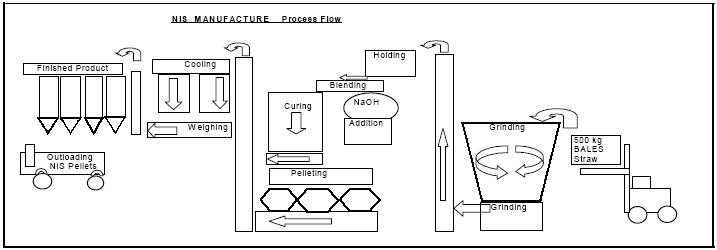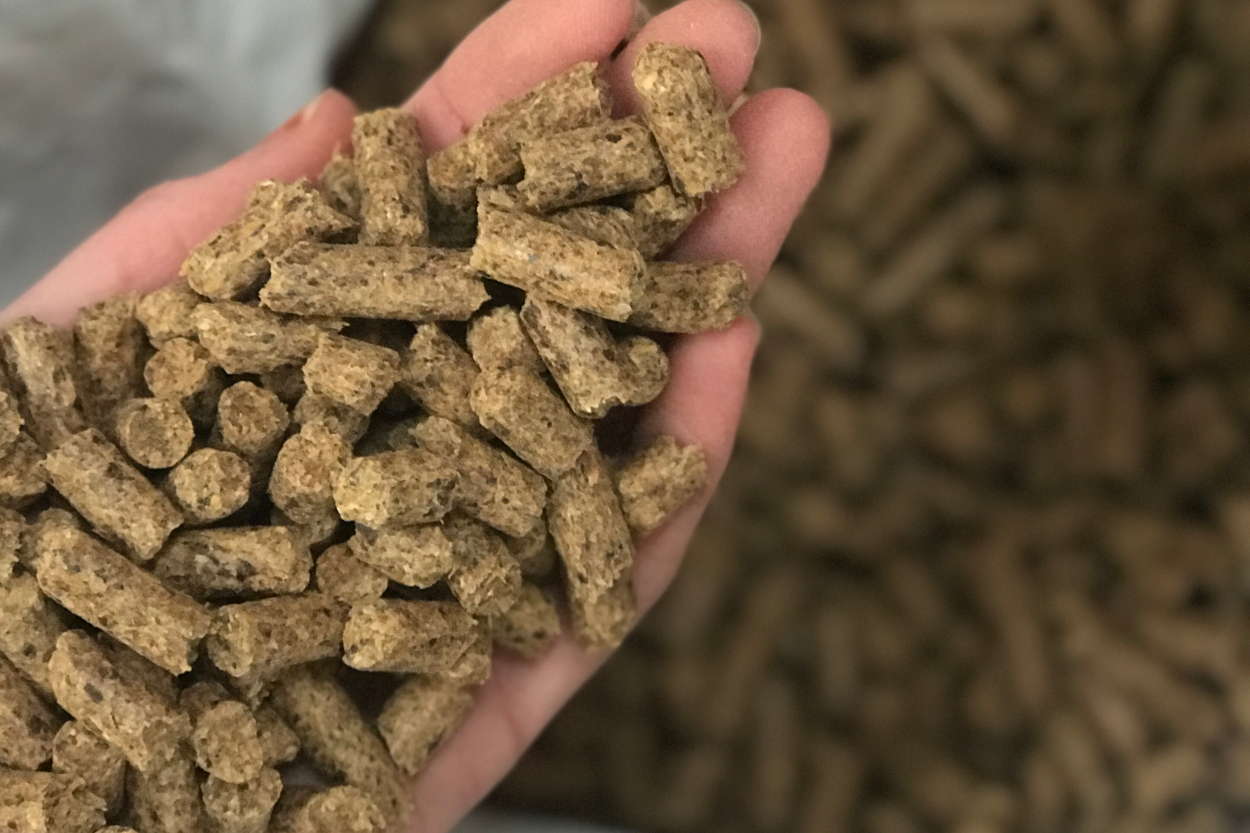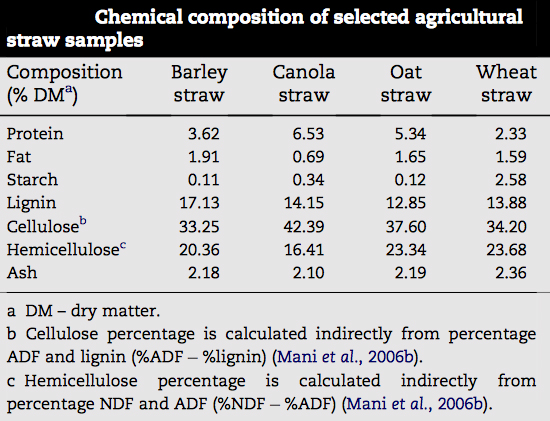Article Index
Page 1 of 2
Nutritionally Improved Straw (NIS) Pellets
-
NIS pellets are very high in fibre (about 33%).
-
NIS pellets make a nutrient contribution to the ration, and modifies the way the rumen functions and affects how the rumen handles other feeds in the diet including fresh grass.
-
NIS is a complementary feed, and the fibre in NIS is "functional" fibre.
-
The Straw Pellets are produced from a unique patented process where cereal straw is treated with low levels of sodium hydroxide (alkali treatment) and extruded to accelerate the chemical breakdown of the fibrous fraction. This process increases the ‘D’ value of the straw from approximately 38% to 62% producing an economical source of energy ideal for all ruminant, horse and rabbit foods.
Process flow diagram (from Sundown products): 

Nutritionally Improved Straw Pellets analysis (%) on a dry matter basis:
Protein |
Oil |
Crude Fibre |
Digestible fibre |
Ash |
4 |
1.5 |
33 |
25 |
10 |
Dry Matter (%) |
Metabolisable energy (ME)(mega joules/kg dry matter) |
Neutral Detergent Fibre (NDF) (%) |
Moisture (%) |
89 |
8 |
78 |
11 |
Straw Pellets are:
-
Highly economic energy ingredient.
-
Suitable for all ruminant, horse and rabbit foods (at different inclusion rates)
-
High in digestible fibre
-
Manufactured from Patented process
 Usage
Usage
-
In dairy cows, Straw Pellets can be used in compound feeds up to 25% of the ration.
-
In beef cows, Straw Pellets can be used in compound feeds up to 30% of the ration.
Benefits
-
Nutritionally Improved Straw Pellets is a forage extender and a digestive aid.
-
It's also an economical source of energy from digestible fibre and a rumen conditioner for cows. It also contributes sodium carbonate and sodium bicarbonate and can improve the utilisation of all the raw materials in the diet.
Origins
-
The pellets are manufactured in Britain from British straw and therefore has full traceability and it FEMAS certified.
Feeding levels
-
Because NIS is a source of functional fibre from plant stems, overfeeding is unlikely to be a problem. With any forage, animals tend to limit their intakes.
Storage
-
Kept dry and covered, NIS will not go off and can keep for many months.
-
Any product left over from winter feeding can be used to correct imbalances in spring grass. (All our rations are regularly tested by a DEFRA approved laboratory.)



